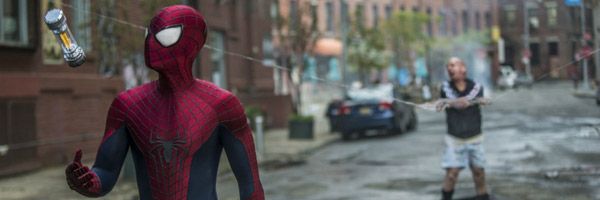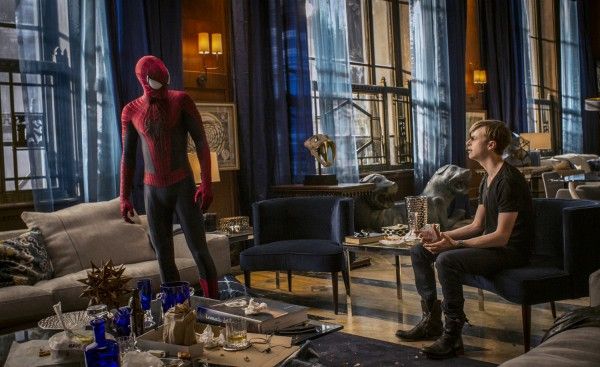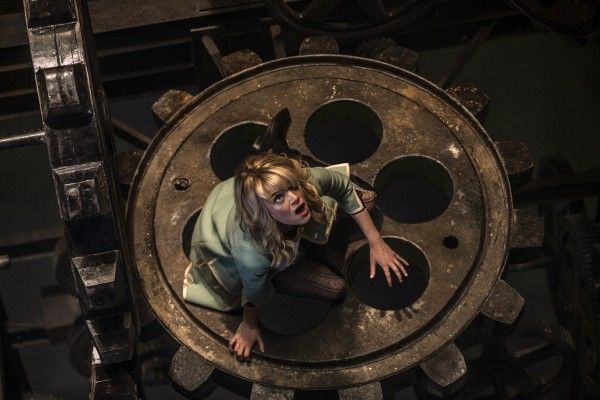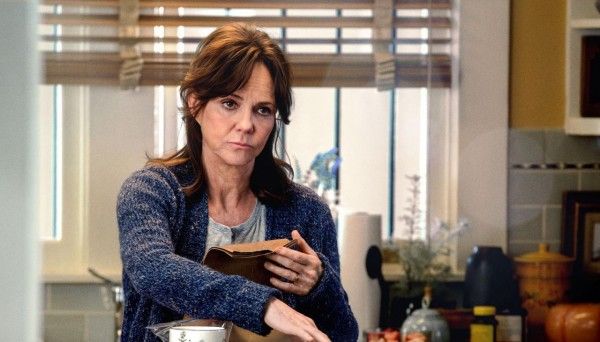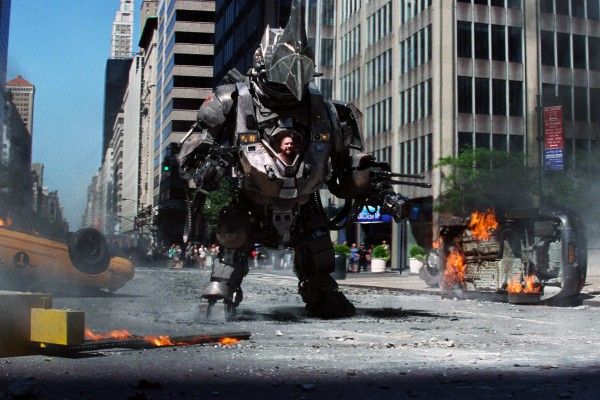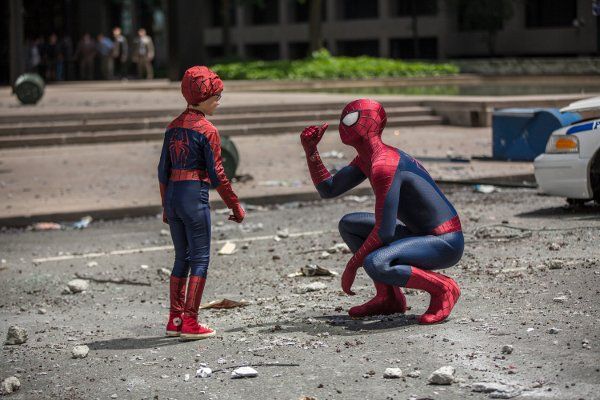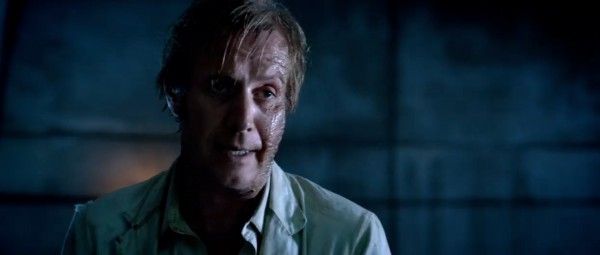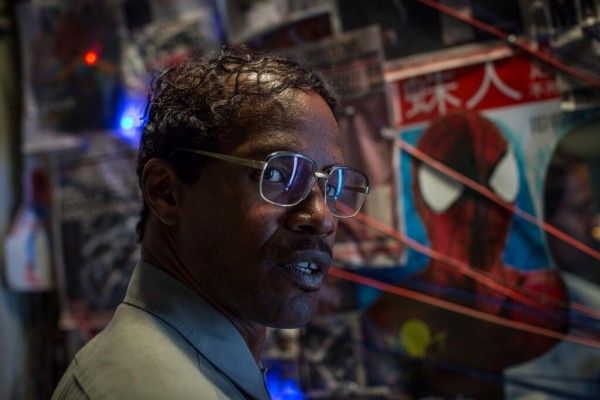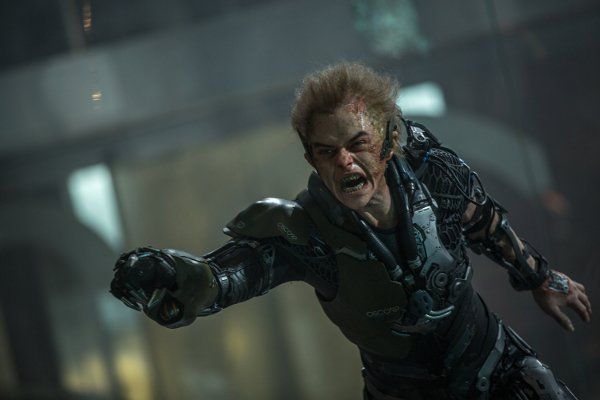Marvel’s embrace of genre may have no greater success story than Spider-Man: Homecoming. Whereas Ant-Man made swift, wildly imaginative work of the caper genre, Doctor Strange fully embraced fantasy elements, and Iron Man 3's radical, imperfect take on the character study, Spider-Man: Homecoming is a teen comedy, first and foremost. And it may very well be the wittiest and most emotionally mature film of its kind since Azazel Jacobs’ Terri.
The fact that the movie focuses on Peter Parker’s life as a high-school student, more believable with 21-year-old Tom Holland in the role, over his potential romance(s), his home life, or his work as your friendly neighborhood Spider-Man is crucial to its success. And more than Andrew Garfield or Tobey Maguire, who were 29 and 27 respectively when they took on the role, Holland has a natural way of blending the naiveté of a bright yet shy student and the brash confidence of being a tech-savvy superhero. Maguire, an talented performer, never found that cockiness naturally and when he and Sam Raimi forced it in Spider-Man 3, it made for what remains arguably the most tone-deaf superhero movie ever made.
It was Garfield who first suggested this confidence with more clarity, especially when he was under the mask and dispensing of local toughs or, in the case of The Amazing Spider-Man 2, Paul Giamatti sporting a Russian accent that could make your plants wilt out of embarrassment. It was also in Marc Webb’s diptych of Spider-Man movies that the focus of the drama realigned with Parker’s age and place in the world, making his high school a key location in The Amazing Spider-Man and the end of his high-school career instrumental to the narrative of its sequel, which shows grave results for choosing a hero’s life.
For what it’s worth, The Amazing Spider-Man was received positively for the most part with its ranking on Rotten Tomatoes standing at a relatively healthy 72%. Still, the movies share certain issues, such as the music cues being guided more by popularity than taste and utilized primarily to keep the audience engaged during erroneous montages. And that’s not even touching on the useless origin story or the fact that Rhys Ifans’ The Lizard barely wears his lab coat and looks like one of the monstrous, enormous goombas from the Super Mario Bros. movie.
And yet, Webb and his cast improve on a number of issues that held back the Sam Raimi films, especially in the character of Parker. Maguire’s Parker was obsessed with Mary Jane and their romance dominated much of Raimi’s stories when he wasn’t fighting the Green Goblin or Doctor Octopus. And Kirsten Dunst’s crimson-haired Jane is defined by nothing but her relationship to Parker, even when she gets engaged to J. Jonah Jameson’s clean-cut astronaut son. Dunst is a sensationally evocative and alert performer and she handles the big scenes with Maguire with a tenderness that never tips into out-and-out sentimentality. That being said, the fact that Mary Jane, a hard-hustling waitress and budding thespian, is seemingly spending all her time waiting on Parker, who can’t hold down a pizza-delivery gig in his off hours, is a bunch of bananas.
In comparison, Emma Stone’s Gwen Stacy feels self-possessed and independent from her first big scene in Webb’s films, in which she dresses down would-be Venom host Flash Thomson for not being able to keep up with tutoring sessions. She doesn’t feel devoted to Parker the moment they get alone and when Parker unveils his alter ego to her, it’s clear that she’s at once frightened and swiftly seduced by his revelation. Stone’s real-life relationship with Garfield likely powered this chemistry, but treating the character as her own woman who struggles with her complicated romance with Parker is embedded in the script. When Laura Harrier and Zendaya light up the screen in Spider-Man: Homecoming, its Stone’s Stacy that feels like the biggest influence in the room.
The cast is just as good in The Amazing Spider-Man 2 but the gap between the second film’s admirable ambitions and its rigid production is far wider than in Webb’s first try. To his credit, Webb clearly understands the power of villains, and the sequel creates a bigger rogue’s gallery for Spidey to fend off between the Green Goblin, Electro, and Giamatti’s Rhino. (There are also teases of Black Cat, Chameleon, and others that might have appeared in the proposed Sinister Six movie.) Working from a script by Alex Kurtzman and Roberto Orci, Webb makes genuine connections between his villains and hero, especially in Jamie Foxx’s portrayal of Electro, even though his origins are startlingly similar to that of the Riddler in Batman Forever.
Electro’s attack on Times Square allows for what feels like a sincere moment of connection between Parker and Electro but it’s never explored beyond that standoff. Webb and his writers know that Spider-Man’s love for his own heroics is elemental to his drive but also his own sort of self-satisfaction, one that partially leads to the death of Gwen Stacy at the hands of Dane DeHaan’s Harry Osborn. There’s a sense of this self-importance constantly in Garfield’s performance but it only seems to really erupt when Stacy is killed and there’s less than 15 minutes left of the movie, including credits.
This is also true of the Osborn family. In Raimi’s films, there’s warmth to Willem Dafoe’s Norman Osborn, the man who will become the Green Goblin, that’s eventually washed out by his resentment of control and betrayal by who he sees as lesser people. For much of Raimi’s first film, he wishes to protect his son, Harry (James Franco), from a life ruled by vengeance and anger, and that rings out even more so in his final moment with Parker.
In comparison, the Osborns of Webb’s films are toxic. The bedside scene between an ailing Norman (Chris Cooper) and Harry toward the beginning of The Amazing Spider-Man 2 underlines this point and is one of the more ominous scenes in either film. And though this makes for a more complex villain, we do lose the fraught relationship between Harry and Parker, which was one of the more memorable elements of the Raimi films. In Webb’s film, the friendly exchanges between Harry and Parker feel flippant and awkward at best.
Thankfully, this is a relationship that Spider-Man: Homecoming avoided, but it also develops the idea of Parker’s world being rife with villains, including Vulture, The Tinkerer, and Shocker. One might argue that this tactic was also utilized in Spider-Man 3’s use of Sandman and Venom, but Venom only shows up toward the very end of that movie and is of next to no consequence. And yet, it’s clear that Raimi’s films are far more dramatically fulfilling and cohesive on the whole than Webb’s movies, which are plagued by the familiar “universe-building” requirements of modern Marvel franchises.
Obviously, there will be more Spider-Man movies following Homecoming but as you watch the movie, there’s no sense that director Jon Watts and his writers are pushing that agenda. The movie, for all intents and purposes, feels like its own self-contained movie, despite the fact that Spidey’s appearance in Captain America: Civil War influences the narrative. There are more than a few moments in each of Webb’s films that also give a glimpse at a more sprightly, humorous, and emotionally rewarding Spidey movie – this is, after all, the director behind (500) Days of Summer. The ecstatic entertainment of Spider-Man: Homecoming feels like a genuine turning point for Marvel, and to think that Webb’s films didn’t help guide Watts and his creative team toward this success is to ignore the real growth that Marvel has shown as of late.

